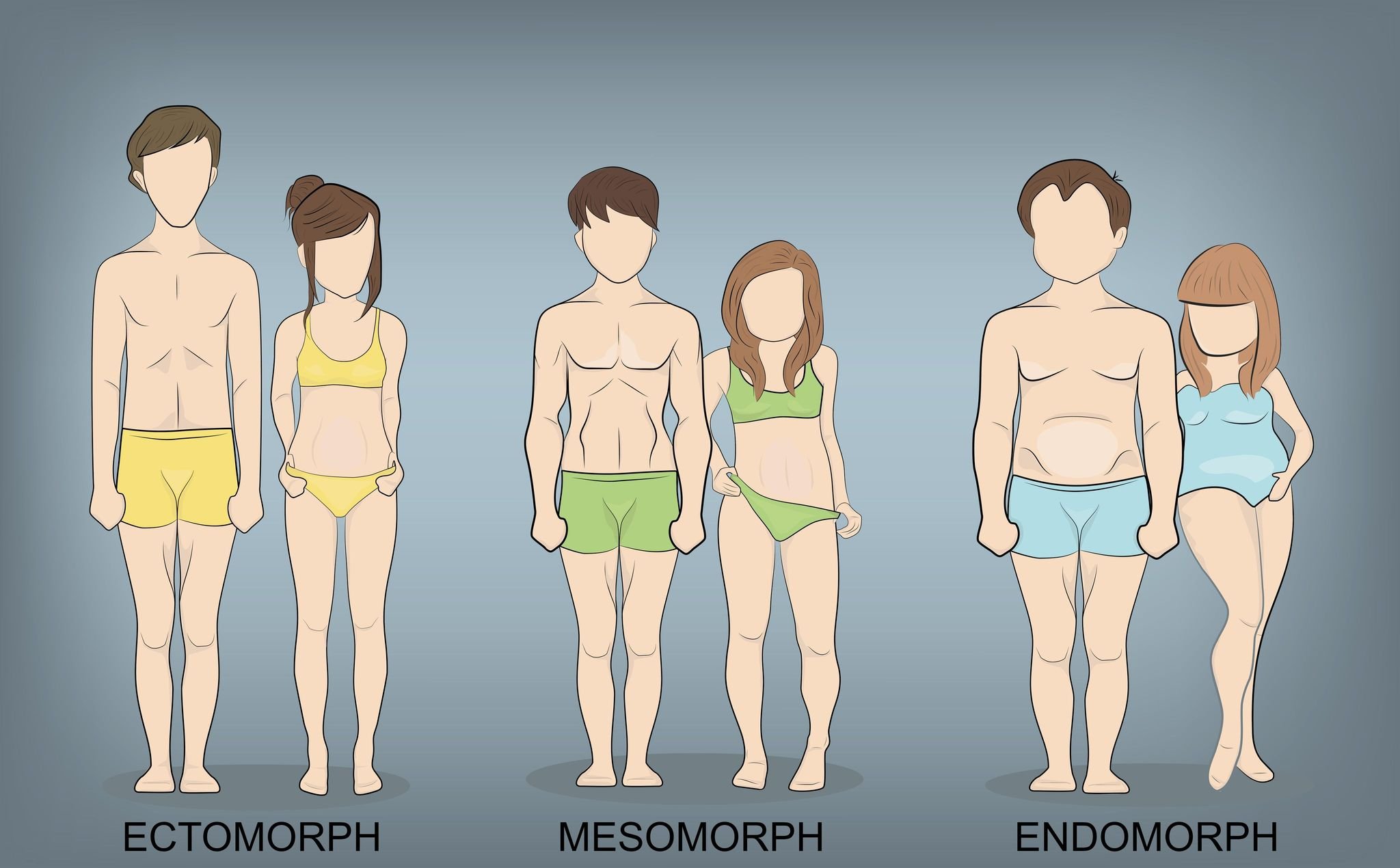Body types & how they affect nutrition
What are the body types? How do you identify yours? And how does it affect the macro split of your diet?
When we decide to work towards improving our physique, we have to take diet seriously and focus on our eating habits. One person’s diet may not suit the next person. Adding muscle, losing fat, and maintaining, are different depending on where your body’s genetics are. We inherit our genetics from family and these determine our body types.
There are three main body types - some websites may list 5, however, as there are people who sit slightly between the three, and would usually lean more towards one than the other.
So what are these body types? Which one do you have? How does it affect your ideal diet?
1. Ectomorphs
No, it’s not a spooky monster from the Ghostbusters movies! Ectomorphs are leaner (often taller) people with a naturally thin body, narrow hips and shoulders, with long thin arms and legs. You often see these in distance running like marathons, or as catwalk models.
Ectomorphs have a high tolerance to carbohydrates because they have a much higher BMR (Basal Metabolic Rate), which means their metabolism is higher than other body types, meaning they burn more calories at rest. One major impact of this is that Ectomorphs have a challenging time when they want to add weight or muscle (you often hear the term “Hard Gainer”).
To achieve a strong-looking healthy physique, they usually eat a lot more calories than other groups and require a high amount of carbohydrate to fuel that size growth.
A good macronutrient breakdown for an ectomorph would be: 25% Protein - 55% Carbohydrates - 20% Fat. This would be a split within your total TDEE calories.
2. Mesomorphs
This is the body type you often see all over social media with strong, muscle-defined fitness influencers. These people find it relatively easy to put on muscle and have a strong athletic physique. You would expect a mesomorph to have a more triangular body shape, with broad shoulders and a slim waistline.
Usually, stronger people that add muscle evenly across their body, a mesomorph can quite easily adjust their physique with small changes to calories. Although this sounds fab it must be noted that mesomorphs gain body fat quickly when they become inactive or overeat.
A mesomorph has a moderate BMR and does not process carbohydrates as efficiently as an ectomorph and as such would require a different macronutrient split: 30% Protein - 40% Carbohydrates - 30% Fat
3. Endomorphs
If you are an Endomorph it means you have a rounder “apple” shaped body with shorter limbs, you may be “big boned” with a wider frame, and usually with wider hips. Endomorphs find it easier to gain strength whilst more challenging to reduce body fat.
Endomorphs have a far lower tolerance to carbohydrates and this is because they have a far lower BMR, meaning their body burns far fewer calories at rest, leading to a need for more continuous movement in their day, and a different macronutrient split.
Endomorphs do well when consuming low to moderate GI foods (Glycemic index) which take longer for the body to process.
An ideal macro split would be: 35% Protein - 25% Carbohydrates - 40% Fat
In Conclusion
Your body type has a massive influence on how you should eat, and although this offers different degrees of challenge, you can aim for a strong, lean physique, but be aware that ectomorphs or endomorphs will take longer-term commitment and consistency to maintain that physique. However, that is what lifestyle change is all about.
Feel free to contact me if you have any questions.

